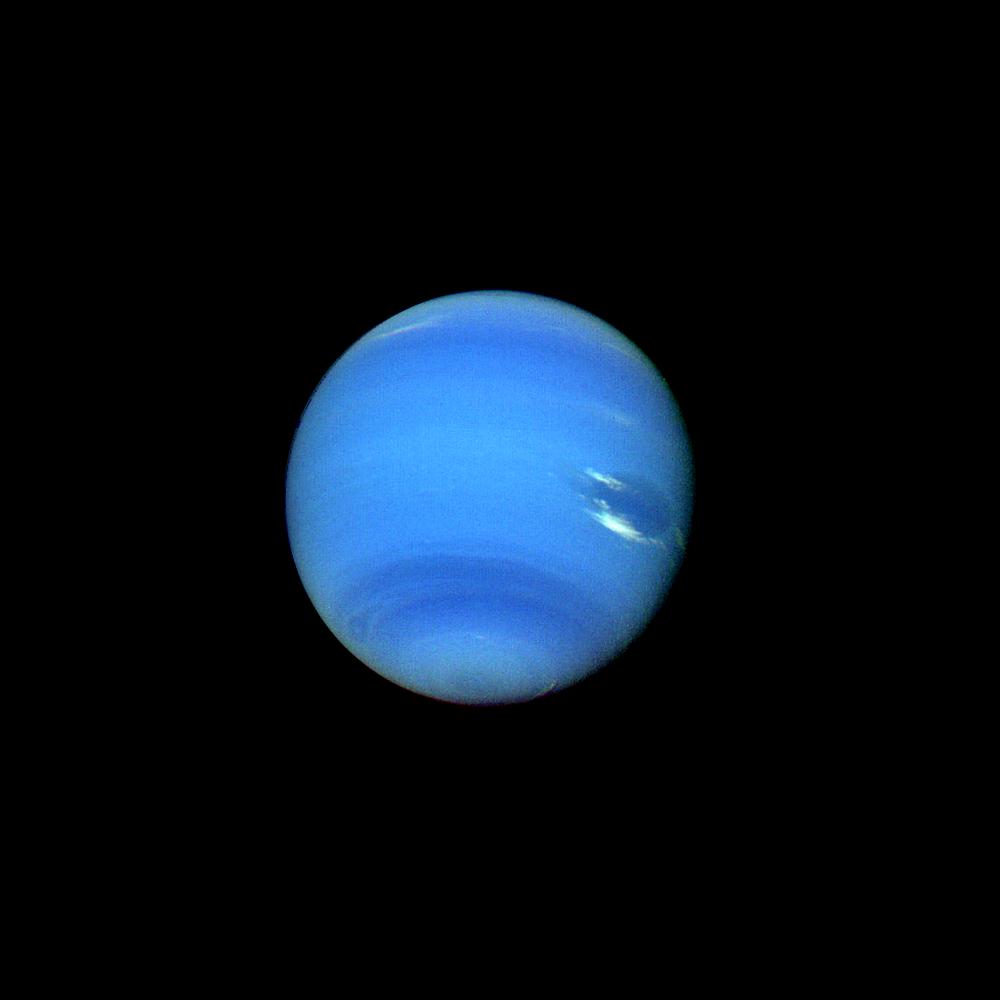The distant planet Neptune stands still against the background stars of Pisces in the early-morning sky, still visible close to Saturn.
This contrast-enhanced image of Neptune was snapped by Voyager 2 in 1989. Credit: NASA/JPL
- On a specified date, Neptune appears stationary in the constellation Pisces, positioned approximately 1° north of Saturn.
- The planetary pair, Saturn (magnitude 0.9) and Neptune (magnitude 7.7), are observable in the southeastern sky before sunrise, with Saturn easily visible to the naked eye and Neptune requiring binoculars or a telescope.
- Saturn’s rings are approximately 40” across, and several of its moons, including Titan, are also visible through a telescope.
Neptune stands stationary against the background stars of Pisces the Fish at 11 A.M. EDT. The solar system’s most distant planet is visible in the early-morning sky, now just 1° north of the planet Saturn.
Catch the planetary pair a few hours before sunrise in the southeast, standing about 35° high at 3:30 A.M. local daylight time. They are below and slightly to the left of the Circlet asterism in Pisces. Saturn is easily visible without optical aid at magnitude 0.9, offering a bright signpost to find magnitude 7.7 Neptune, which falls below the detectability threshold of the naked eye. Instead, you can use binoculars or any telescope to find the planet, visible in the same field of view as Saturn. Neptune’s tiny disk spans just 2” at its great distance — can you tell that this “flat,” bluish-gray star is not a star at all?
Through a telescope eyepiece, Saturn shows off its lovely rings, now 40” from end to end. Several smaller, 10th-magnitude moons hover near the disk of the planet, while mid-8th-magnitude Titan, the planet’s largest moon, lies about 2.5’ west of the ringed world.
Sunrise: 5:38 A.M.
Sunset: 8:32 P.M.
Moonrise: 4:15 P.M.
Moonset: 1:26 A.M.
Moon Phase: Waxing gibbous (76%)
*Times for sunrise, sunset, moonrise, and moonset are given in local time from 40° N 90° W. The Moon’s illumination is given at 12 P.M. local time from the same location.
For a look ahead at more upcoming sky events, check out our full Sky This Week column.
